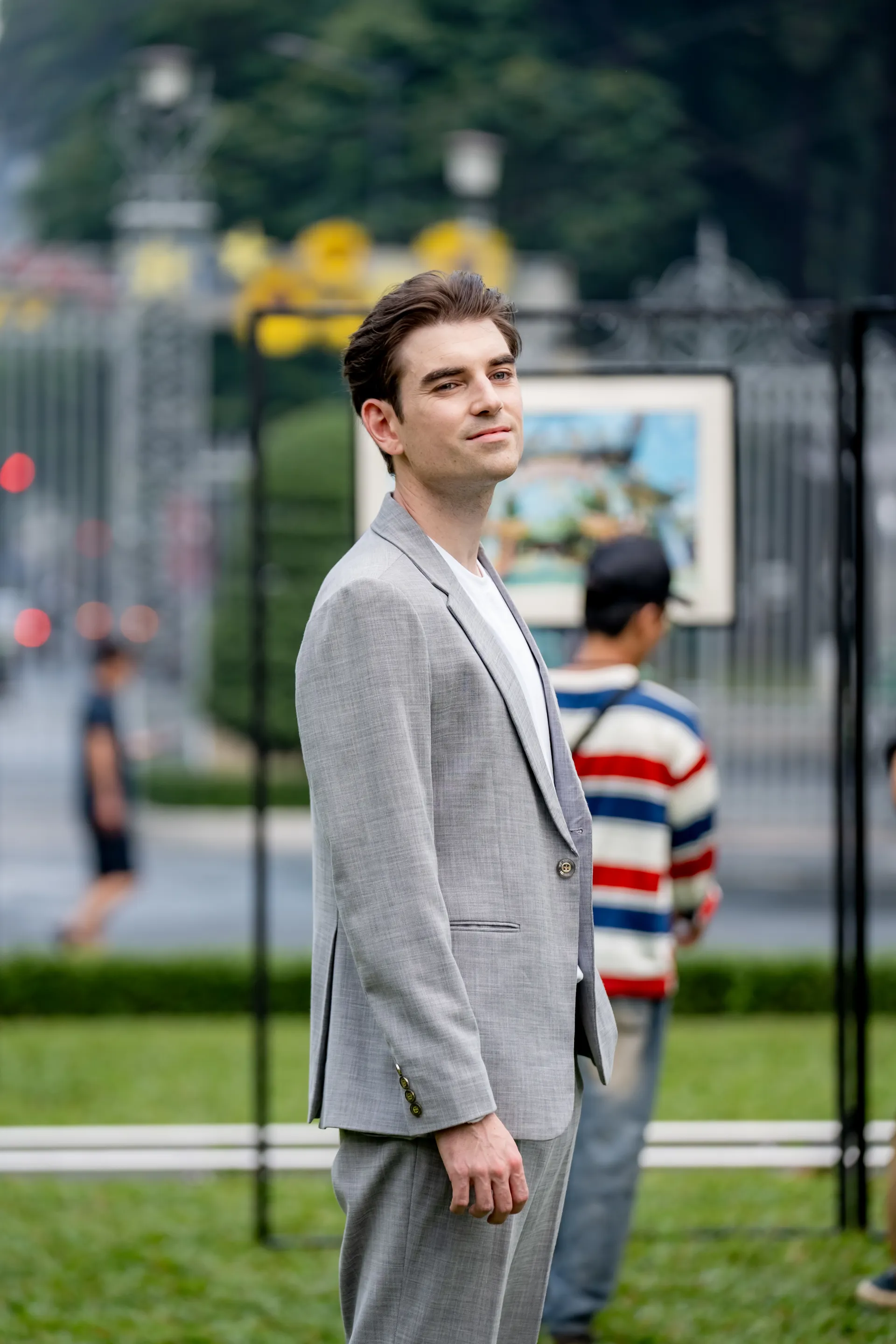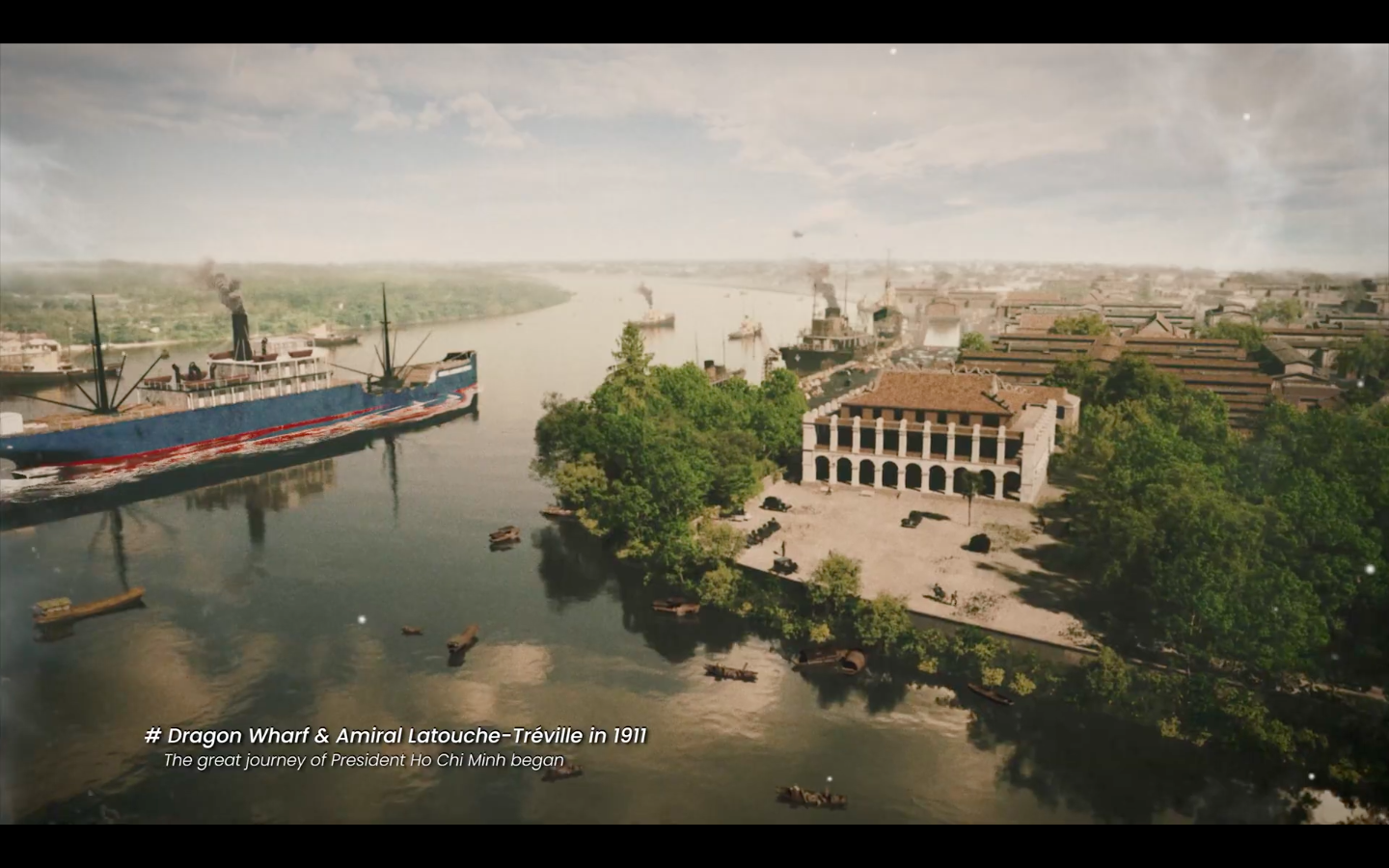Cinematic tribute to Ho Chi Minh City premieres on Reunification Day
The film “50 Flashes” blends history, memory, and magic, bringing to life the city named after President Ho Chi Minh through a lens of emotion and time.
THE HANOI TIMES — The short film “50 Flashes” offers a fresh approach to promoting the city on the occasion of the 50th anniversary of Reunification Day.
More than a typical tourism video, it presents a cinematic perspective of the city, highlighting its cultural depth, historical significance, and the vibrancy of daily urban life.

German actor Dai Oi plays a male tourist in the travel movie "50 Flashes". Photo: Newday Media
As the film crew explains, this is the first time a Vietnamese city has used cinematic storytelling to promote its identity. "50 Flashes" blends fantasy, history, and adventure to explore this vibrant southern metropolis's rich, multifaceted layers. Beyond its visual appeal, the film inspires a stronger bond, fostering a sense of pride, belonging, and respect for Ho Chi Minh City (HCMC)'s rich history.
The film opens with a scene that touches the heart of every Vietnamese. It's 1911, and a young man stands alone aboard a large ship anchored in the Nha Rong Wharf. That young man is Nguyen Tat Thanh, later known to the world as President Ho Chi Minh, Vietnam’s first revolutionary journalist, who was leaving Vietnam to seek a path to national salvation.
The film uses advanced cinematography to recreate this historic moment, making the viewer feel as if they are witnessing this pivotal scene firsthand. It's hauntingly real, not just for the ultra-high definition of its visuals, but for the magnitude of what it represents.
Sixty-five years later, the city he once left behind was proud to bear his name. This journey, both literal and symbolic, becomes a thread throughout "50 Flashes".
Director Le Hai Yen said: "50 Flashes' is not just a movie, it is a journey of discovery. Every frame carries a piece of the city's spirit. Some stories have never been told in this way, and many of the places we visit have lived quietly in the pages of history books until now."
The story centers on a young traveler (German actor Dai Oi) who visits an antique shop tucked away in the city's bustling streets, where he stumbles upon an old camera that once belonged to a wartime photojournalist. When he presses the shutter, the camera becomes a portal that pulls him through layers of time and memory, from the colonial past to the electric present of HCMC.

Nha Rong (Dragon) Wharf scenery in the travel movie.
On this magical journey, he finds himself immersed in the soul of the city, crawling through the shadows of the Cu Chi tunnels, breathing in the wild beauty of the Can Gio mangrove forest, and standing in awe beneath the vaulted ceilings of the Central Post Office. He hears stories etched into walls, tastes memories in bowls of street food, and feels the rhythm of a city that never really sleeps, but it shifts, pulsates, and sings.
Filmed over 60 days, "50 Flashes" captures iconic locations such as the HCMC Museum of Fine Arts, historical landmarks, and quiet corners often overlooked. But more than locations, the film captures the warmth of its people, the resilience of its spirit, and the poetry of a city in constant motion.
The past and present of Ho Chi Minh City are not separated by decades, they live together in every moment. And "50 Flashes" makes this beautifully clear. It does not preach or explain. It simply invites you to feel.
As the city celebrates Reunification Day, "50 Flashes" offers something rare, not just sights and sounds, but emotions. The film gently reminds people that this city is built not only on streets and buildings, but also on sacrifices, dreams, and an enduring love of country.











